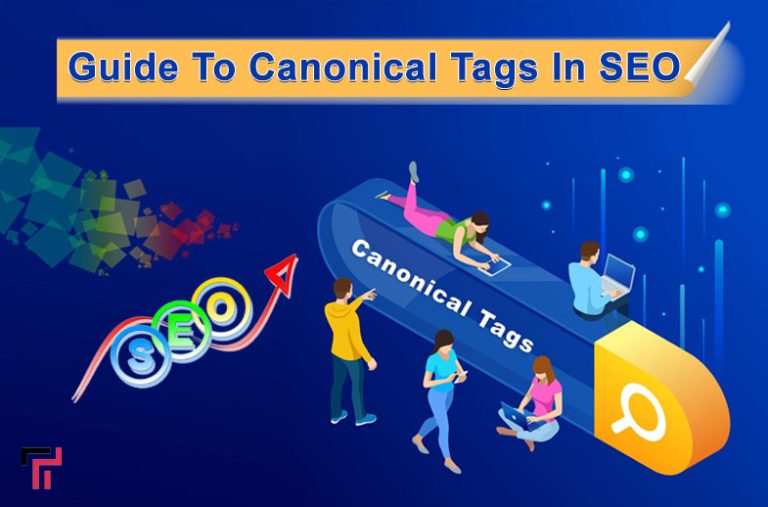Canonical tags have become essential for businesses or individuals who are willing to enhance their online visibility. They are an essential factor in search engine optimization that enables websites to get a known position on search engines. However, they are elements of a programming language, HTML, but have importance in the search engine optimization (SEO) arsenal. They optimize business websites to get higher rankings on search engines for better outcomes in the shape of conversion rates. In this comprehensive guide, we delve into the intricacies of canonical tags, their importance, implementation, and best practices. In this blog post, we will talk about the Complete Guide To Canonical Tags In SEO.
Understanding Canonical Tags
Canonical tags are HTML elements used to specify preferred versions of web pages when multiple versions of duplicate content exist. These tags are formally known as rel=canonical tags that prevent duplicate content issues for better user experiences. Essentially, they inform search engines about the authoritative URL that should be indexed and displayed in search results.
Why are Canonical Tags Important?
Duplicate content can weaken a website’s SEO efforts by dividing ranking signals across multiple URLs. This process will lead to a decrease in search engine visibility and potential penalties that would be the biggest loss. Canonical tags offer solutions by consolidating ranking signals onto a single preferred URL, strengthening its authority and improving search rankings.
Moreover, they contribute to better user experiences by ensuring visitors are directed to the most relevant and authoritative page version. This approach helps businesses enhance their conversion rates, leading to significant annual revenue that will set them as an authority.
Implementation of Canonical Tags
Implementing canonical tags involves adding a simple HTML element to the preferred web page’s `<head>` section. The canonical tag specifies the preferred URL using the attribute `rel=canonical` with the desired URL as its value. For example:
HTML
<link rel=”canonical” href=”https://www.example.com/preferred-url”>
Placing the canonical tag on every version of the page containing duplicate or similar content is crucial to prevent content duplication. For instance, HTTP/HTTPS, www/non-www, and pagination variations will assist you in dividing content into various pages for navigation. This ensures that search engines correctly identify the canonical URL and consolidate ranking signals accurately and accordingly.
Best Practices for Canonical Tags
Individuals who are willing to get the most out of canonical tags need to know some efficient practices to implement. By doing so, they will get to know how to implement and what benefits they will get. In this section, we have compiled some practices for canonical tags.
Identify Duplicate Content
Firstly, the one who wants to implement canonical tags must ensure that the website contains similar or duplicate content. Therefore, they need to conduct thorough research to know if their sites have similar, duplicate, or near-duplicate content. Further, this conducted research includes URL variations, print-friendly pages, session IDs, and parameterized URLs to know any possibility of loss.

Choose the Preferred URL
After identifying duplicate content, you must select the most authoritative and relevant version of the page as the canonical URL. The canonical URL selection process contains some factors to consider, including content quality, backlinks, and user engagement metrics. By doing so, you will be ensure about what type of content you need to dilute and what to save.
Implement Correctly
Thirdly, you must ensure that canonical tags are implemented correctly on all versions of the page. For instance, including mobile and desktop versions, to avoid confusion for search engines. By doing so, search engines will find it easy to dilute the unnecessary content correctly and accordingly. Users will have access to only useful content to consume and be a cause of an increase in conversion rates.
Regular Monitoring
Identifying canonical tags is not a one-time process but a continuous process to keep your sites clean of duplicate content. Therefore, periodically monitoring canonical tags using tools like Google Search Console to identify any issues or duplication is crucial. You will have the capability to address any errors promptly to maintain optimal SEO performance and get a higher ranking.
Update Dynamically Generated Content
Some businesses are generating and updating content in an energetic and innovative manner to engage their target audiences. So, it is essential for such businesses to find out the dynamical canonical tags to dilute duplicate content. In this way, they will be able to reflect the current state of their preferred page to engage organic audiences. This approach will help big enterprises deliver an immersive and engaging user experience to their site visitors.
Avoid Self-Referencing Canonicals
However, canonical tags provide businesses with manifold benefits but also pose many challenges for them that need to be overcome. For instance, if self-referencing canonical tags are being used then this may only cause confusion among search engines. Therefore, you need to avoid these types of canonical tags to prevent confusion among search engines and no value for duplicated content.
Use 301 Redirects When Appropriate
301 redirects are permanent redirects that inform users as well as search engines where they need to go to new URLs of old content. They are commonly used for the convenience of audiences and provide no confusion to search engines for better outcomes. In cases where duplicate content cannot be avoided (e.g., print-friendly pages), consider implementing 301 redirects to the canonical URL. By doing so, you will be able to consolidate ranking signals and prevent the indexing of duplicate pages.
Final Thoughts
Canonical tags play a pivotal role in SEO by mitigating the detrimental effects of duplicate content and enhancing website visibility. By correctly implementing canonical tags and adhering to best practices, webmasters can consolidate ranking signals and improve user experience. Moreover, they will also be able to maintain a competitive edge in the digital marketplace for better annual revenue. As search engines continue to refine their algorithms, mastering canonical tags remains an essential skill for any SEO practitioner striving for success.







